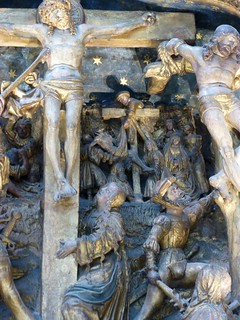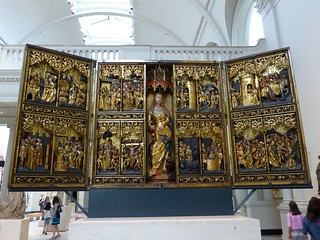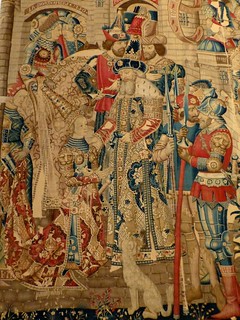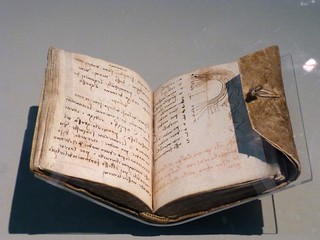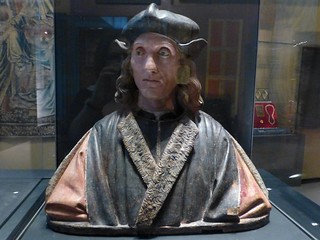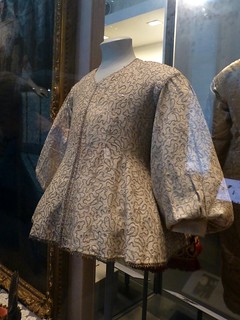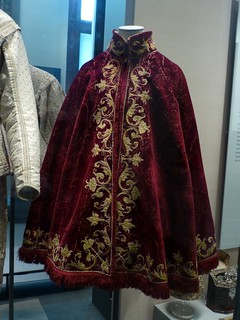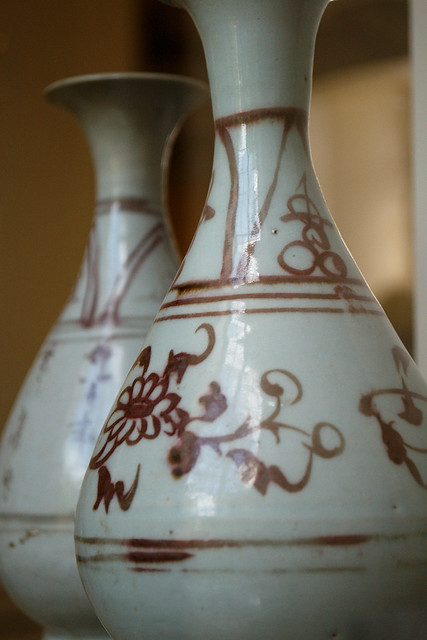Tiger: Spy in the Jungle
Having been to the zoo last week & seen the tigers there, we decided to watch the series about tigers narrated by David Attenborough that we’d recently been recording. It’s a relatively old series (2008), but we hadn’t seen it before. The tigers in a national park in India have been filmed using cameras carried by elephants, or motion-sensing cameras left at spots the tigers frequent. As the tigers aren’t bothered about having elephants around (even ones with cameras & people sitting on top of them) this allowed the programme makers to film the tigers’ natural behaviour.
The three programmes followed a litter of tigers cubs from a few weeks old through to maturity. So it started with four cute fluffy little tiger kittens plus mother, and went through to having a pack of five tigers wandering about (just before the family split up). And lots of footage of young tigers failing to hunt in a variety of amusing ways. Also some footage of the other animals they shared the national park with (and not just their prey animals) – including a selection of monkeys, some jackals, leopards, and peacocks.
A good series 🙂 Although I did find it a bit annoying that the narration constantly said things like “The elephants decide to move on”, because I’m sure it was the mahouts who decided to move on …
The Story of the Jews
This is a new series, presented by Simon Schama, about the history of the Jews. He’s positioning it very much as his way of telling the story of the Jews, rather than a definitive “one true history”. In the intro to the first episode he talks about how Jews are spread through the world and don’t share a common culture, or language, or skin colour, or even common beliefs – but what they have in common is the shared story of their heritage, and the words of their bible.
The bulk of the episode covered the history of the Jews from when they arose as a religion/tribal group through to the destruction of Jerusalem in 70 AD. Firstly he covered some of the biblical stories that are possibly more metaphorical than actual – ie the Exodus with Moses (although there is no archaeological evidence for any of that story), which is still an integral part of the Jewish ritual calendar. And also the fight between David & Goliath, which is probably a story personalising a much longer lasting border conflict between the Jews & the Philistines. He visited a site which has some of the earliest archaeological evidence for Jews following Jewish practice – a fort on the border between Israel & the Philistines where there is evidence that the population didn’t eat pigs (lots of other butchered animal bones, no pig bones), and that their temple had some similar features to later Jewish temples.
Moving on to more solidly historical events he talked about the exile in Babylon and how that shaped the cultural identity of the Jews. While the elite of their society were in Babylon they spent time editing & refining the words of the Jewish Bible into what they considered the definitive version. So on return to Jerusalem those who’d remained behind had to be dragged up to the right standard (presumably much to their dismay). Schama also told us about the Jews who’d fled back into Egypt, to Elephantine Island, when the Babylonians had conquered Jerusalem. Their faith & practice had begun to take a different course, much to the disgust of the new purists in Jerusalem. Including setting up a Temple where they performed animal sacrifice in their town, which was against the rules (the only Temple in which animal sacrifice was permitted was the one in Jerusalem). But this offshoot didn’t flourish – disputes with the other non-Jewish inhabitants of the town resulted in the destruction of their Temple, which removed their local focus of worship.
As obviously this is about the Jews he skipped over Jesus with a mere mention, spending more time talking about Herod and dwelling on the mystics who lived near the Dead Sea (and wrote the Dead Sea Scrolls that are visions of the apocalypse they believed was coming). And Schama finished up by talking about the ill-fated Jewish rebellion against the Romans that led to the destruction of the Temple. He mentioned he’d been brought up to regard the historian Josephus as a traitor to his people, and that attitude was still very clear 😉
Indian Ocean with Simon Reeve
The fifth episode of Simon Reeve’s series about the Indian Ocean took us from Sri Lanka to Bangladesh & was quite thoroughly depressing. In Sri Lanka the focus was on the aftermath of the civil war with children in the north of the island being taught how to identify mines & shells and what to do (Don’t Touch, Find an Adult). And in the capital Reeve talked to a man who runs a newspaper that is critical of the government. His brother (and co-owner) was murdered, equipment has been destroyed and current staff get death threats – the government does not like being criticised.
In India & Bangladesh he looked at the destruction caused by the demand for prawns. He went out on a trawler with some fishermen dredging for prawns, and it was shocking how little they caught in their nets. Dredging for prawns results in a lot of fish being killed because they’re not wanted. Reeve then visited prawn farms in Bangladesh … great idea, right? Unfortunately, no. To farm prawns you flood your land with sea water & then it’s contaminated with salt so you can’t ever move back to growing rice, fruit & veg. The water also contaminates your drinking water supplies, and your neighbours’ land. So a whole area will end up farming prawns as the only thing their land will support and having to buy all their food & water.
And lastly container ship recycling takes place in Bangladesh – another great idea in theory that kinda fails in execution. The workers who break down the ships are not safe – 8 die a month, many more are injured. And the oil & other waste products contaminate the ocean.
King Alfred & the Anglo-Saxons
We also started watching a recent series presented by Michael Wood about the Anglo-Saxons. He is setting forth the idea that three of the most influential kings of England were Anglo-Saxon – King Alfred & his successors. The first episode covered King Alfred’s reign. Alfred wasn’t originally going to be a King – he was a younger son of the King of Wessex (one of the four Anglo-Saxon kingdoms in 9th Century). While he was a young man, and his brother was King, the Vikings conquered all the Anglo-Saxon kingdoms. Alfred’s brother was killed, and Alfred himself fled into the marshes of Somerset. Here he re-grouped over the next few years, and gathered warriors – he then pushed the Vikings back from Wessex & Mercia. He was referred to as the King of all the English kin, but by the end of his life the Vikings still ruled in Northumbria & East Anglia.
The programme didn’t just follow the military side of his life (via the records in the Anglo-Saxon chronicle), but also looked at the ways that he was a good peacetime King. He reformed the economy, and the coins that were minted after he re-took the two kingdoms were much higher quality than previous. He also laid the foundations of south & west England’s towns & cities – many burgs were founded during his reign. These were partly military garrisons to stand ready against any future Viking incursions, but they also became the economic centres of their areas (because they were safer places to conduct your business). One of these burgs was London – it already existed, obviously, but there are references to Alfred re-laying out the streets, or re-founding it (the Anglo-Saxon word is hard to translate).
Alfred was also involved in the translation of “all the important books that a man should read” into Anglo-Saxon – mostly religious texts & commentaries. He was keen to return the country to a state of wisdom & learning, like he believed it had been before the Vikings came. And because the education of people had been interrupted by the decades of war he thought that the books should be translated from Latin into a language they understood.
I already had an idea of the rough outline of Alfred’s story, but the next couple of programmes cover people I don’t have even that much knowledge of, which will be interesting 🙂

